
Maschere della Commedia dell’Arte: Storia, Personaggi e Tradizioni
Masks of the Commedia dell’Arte: History, Characters, and Traditions
Non sono fantastiche queste maschere?
Isn’t it great, these masks?
Adoro le maschere italiane! Perfino i miei orecchini hanno la forma di piccole maschere. Sentite questa: l’altro giorno ho imparato una nuova parola, “canovaccio.” Significa strofinaccio o tela da pittura. Un’altra parola per indicare uno strofinaccio per asciugare i piatti è “strofinaccio.” Ma un amico mi ha fatto notare che “canovaccio” può anche significare la trama di un tipico dramma della Commedia dell’Arte.
I love Italian masks! Even my earrings are shaped like little masks. Listen to this: the other day I learned a new word, “canovaccio.” It means dish towel or painting canvas. Another term for drying dishes is “strofinaccio.” However, a friend let me know that “canovaccio” can also mean the sketch for a typical Commedia dell’Arte drama.

La magia della Commedia dell’Arte
The Magic of the Commedia dell’Arte
La Commedia dell’Arte è una forma di teatro caratterizzata da personaggi mascherati nata in Italia nel XVII secolo. Ha aperto la strada alle attrici donne e agli sketch comici improvvisati. Le scenette non erano basate su copioni scritti ma su “canovacci,” ovvero scene improvvisate spesso rappresentate all’aperto con pochi oggetti di scena. La compagnia teatrale era composta da dieci persone, otto uomini e due donne.
The Commedia dell’Arte is a form of theater characterized by masked characters, which originated in Italy in the 17th century. It paved the way for female actresses and improvised comedy skits. The skits were not based on written scripts but on “canovacci,” or improvised scenes, often performed outdoors with minimal props. The theater company consisted of ten people, eight men, and two women.
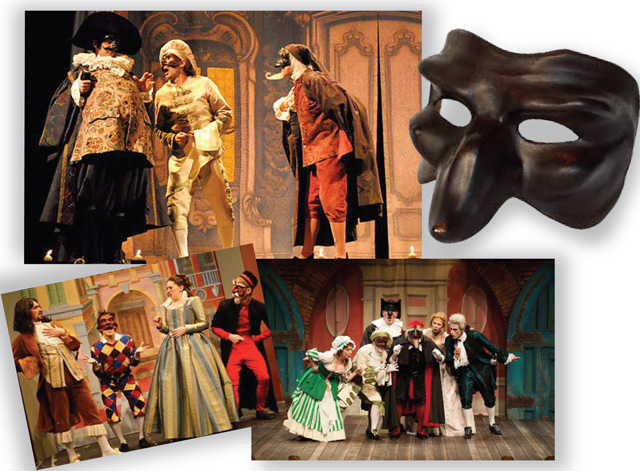
Creatività e ingegno degli attori
The Creativity and Ingenuity of the Actors
Gli attori della Commedia dell’Arte dovevano essere dotati di una mente inventiva, poiché il successo dello spettacolo dipendeva in gran parte dalla loro creatività e, soprattutto, dalle battute o dagli scherzi. L’attenzione era focalizzata sugli attori, piuttosto che sulla trama.
Actors in the Commedia dell’Arte needed to have an inventive mind, as the success of the play depended largely on their creativity and, above all, their jokes or pranks. The spotlight was on the actors rather than the storyline.
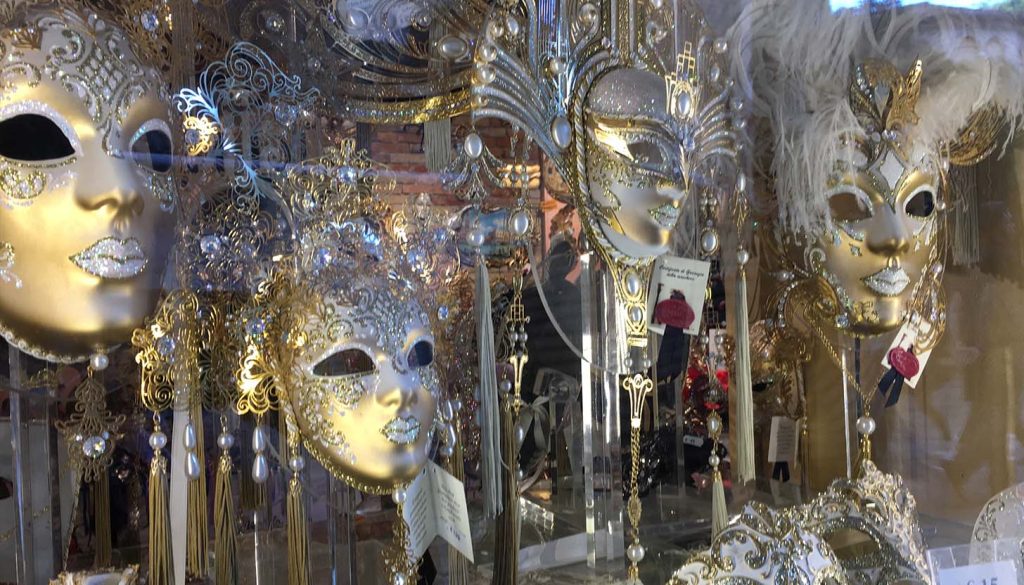
Le maschere: un simbolo immortale
Masks: An Immortal Symbol
L’Italia, e Venezia in particolare, è famosa per le maschere di carnevale, che in realtà hanno origine nelle maschere utilizzate dagli attori della Commedia dell’Arte. Ogni personaggio aveva una maschera diversa che rappresentava personalità uniche.
Italy, and Venice in particular, is famous for carnival masks, which actually originated from the masks used by the actors of the Commedia dell’Arte. Each character had a different mask representing unique personalities.
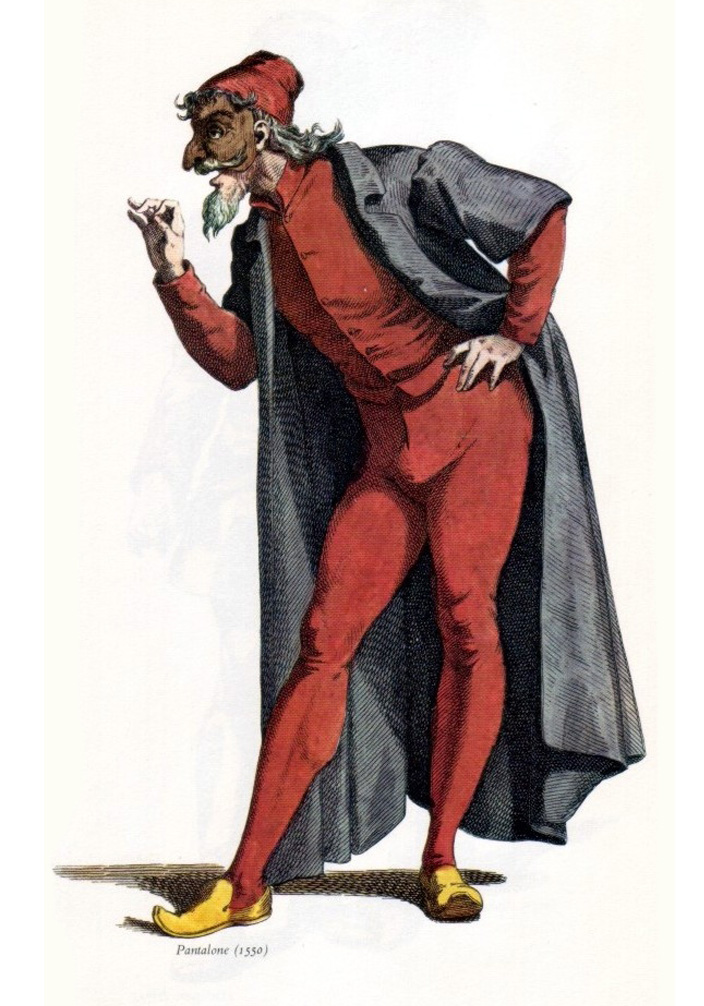 Pantalone
Pantalone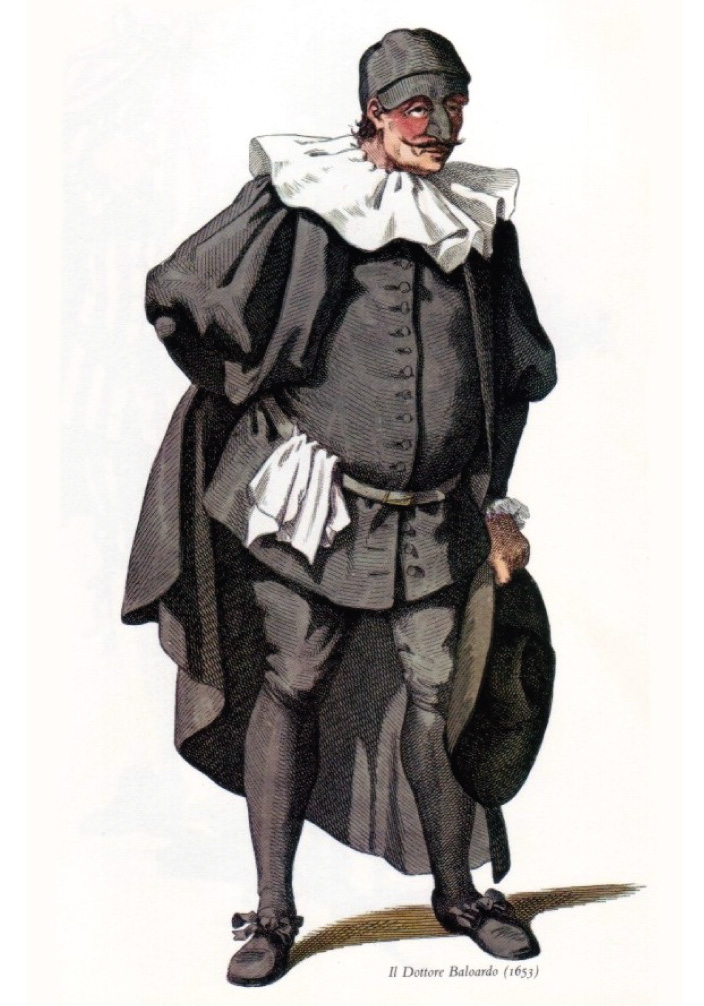 Balanzone
Balanzone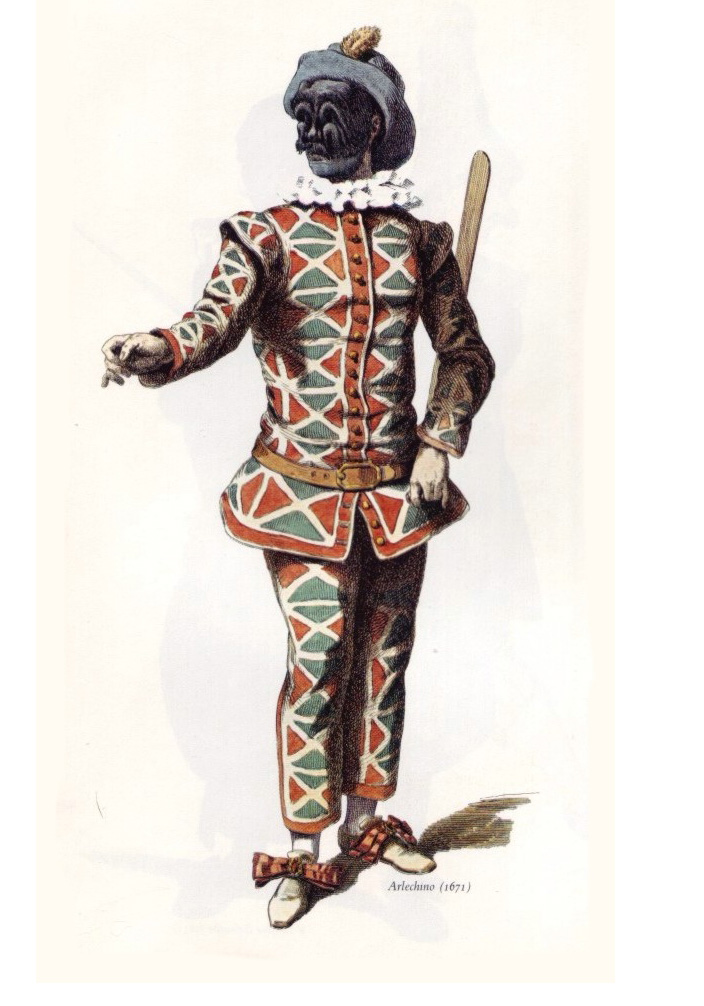 Arlecchino
Arlecchino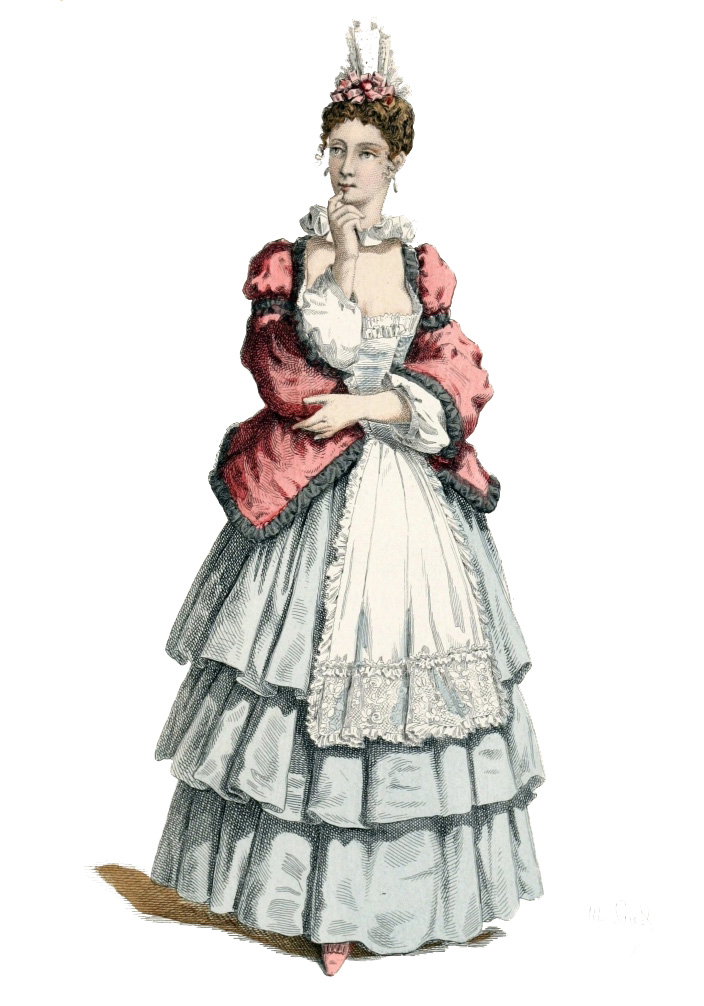 Colombina
Colombina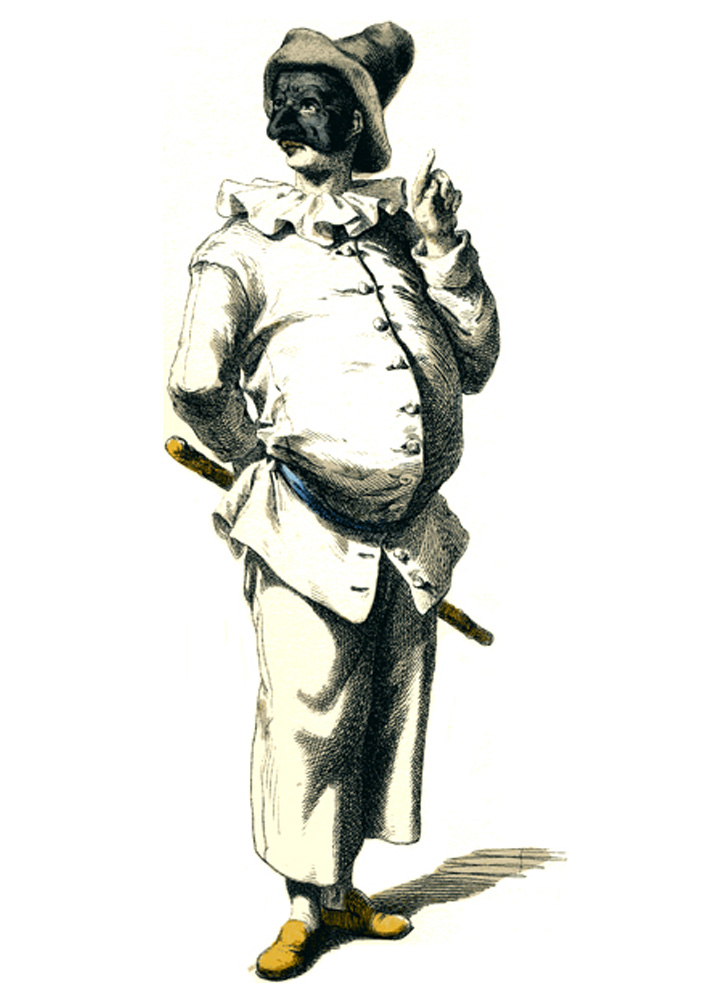 Pucinella
Pucinella
Personaggi iconici della Commedia
Iconic Characters of the Commedia
Pantalone o il Magnifico è ricco e avaro: un vecchio mercante spesso in competizione per il cuore di una giovane donna attraente.
Pantalone, or il Magnifico, is rich and stingy: an old merchant often competing for the heart of a young, attractive woman.
Balanzone, detto il Dottore, è grasso e noioso: il suo personaggio è serio e pretenzioso.
Balanzone, known as the Doctor, is fat and boring: his character is serious and pretentious.
Arlecchino è furbo e divertente: il servitore imbroglione sempre affamato.
Arlecchino is sly and funny: the con-artist servant who is always hungry.
Colombina è la bellissima e ingenua serva: spesso accoppiata con Arlecchino, ha anche un lato pratico e qualche tratto furbo.
Colombina is the beautiful, innocent servant: often paired with Arlecchino, she has a practical side and some sneaky qualities.
Pulcinella è un chiacchierone pigro: una delle maschere più famose, mescola caratteristiche di stupidità con una buona dose di saggezza. Pulcinella è la maschera napoletana per eccellenza.
Pulcinella is a lazy chatterbox: one of the most famous masks, combining foolishness with wisdom. Pulcinella is the quintessential Neapolitan mask.

Espressioni legate al Carnevale
Expressions Inspired by Carnival
Avete mai sentito dire “il segreto di Pulcinella”? Pulcinella, essendo un opportunista che non sa tenere un segreto, è la persona meno indicata per confidare qualcosa di riservato. Se Pulcinella conosce un segreto, presto lo conoscerà tutto il mondo.
Have you ever heard “il segreto di Pulcinella”? Pulcinella, being an opportunist who can’t keep a secret, is the least suitable person to trust with a secret. If Pulcinella knows a secret, the whole world will soon know it.
Un’altra espressione è “Ti conosco, mascherina!” che significa che, nonostante le apparenze, non ci si fa ingannare. Durante il Carnevale medievale, le maschere permettevano di nascondere la propria identità e comportarsi in modi altrimenti impensabili.
Another expression is “Ti conosco, mascherina!” meaning that, despite appearances, you can’t fool us. During the medieval Carnival, masks allowed people to hide their identity and act in ways they wouldn’t dare otherwise.
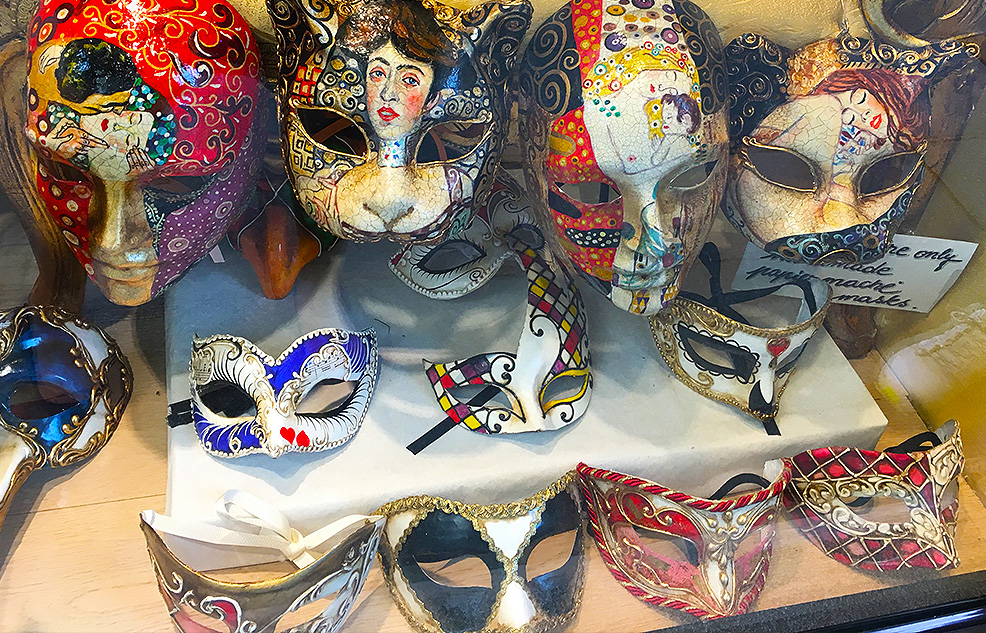
Carnevale: scherzi e filastrocche di Gianni Rodari
Carnival: Jokes and Nursery Rhymes by Gianni Rodari
È carnevale, e ogni scherzo oggi vale.
At carnival, every prank today is valid.
Ecco una sua filastrocca / Here’s a rhyme he wrote
“Con la maschera sulla bocca, con la maschera sugli occhi, con le toppe sui ginocchi: sono le toppe d’Arlecchino, vestito di carta, poverino. Pulcinella è grosso e bianco, e Pierrot fa il saltimbanco…”
“With a mask on his mouth, a mask on his eyes, with patches on his knees: these are the patches of Arlecchino, dressed in paper, the poor fellow. Pulcinella is big and white, and Pierrot is the acrobat…”
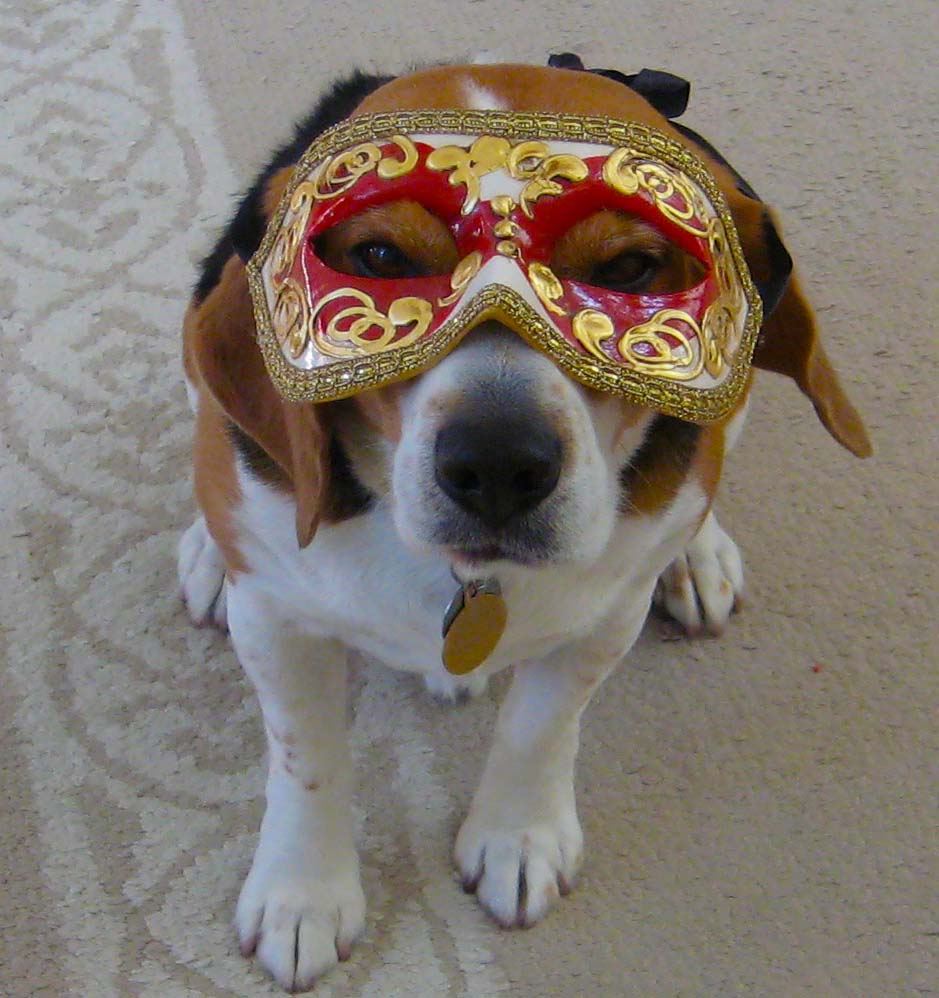
Tutti indossano le maschere, anche il cane!
Everyone is wearing masks, even the dog!
Anche se non posso essere in Italia a festeggiare il Carnevale a Venezia, sono determinata a catturare lo spirito festivo. Proprio come i miei amici italiani, mi sto immergendo nel divertimento—insieme a Sinbad, il mio cane sempre affascinante, entrambi fieri di indossare le nostre maschere!
Although I can’t be in Italy celebrating Carnival in Venice, I’m determined to capture the festive spirit. Just like my Italian friends, I’m diving into the fun—with Sinbad, my ever-charming dog, by my side, both of us proudly wearing our masks!
Ricordate, “ogni scherzo vale!” Oggi è l’occasione perfetta per mettere la vostra maschera preferita e lasciar brillare il vostro lato giocoso — vai un po’ “matta!”
Remember, “ogni scherzo vale!” Today is the perfect excuse to don your favorite mask and go a little “matta!”




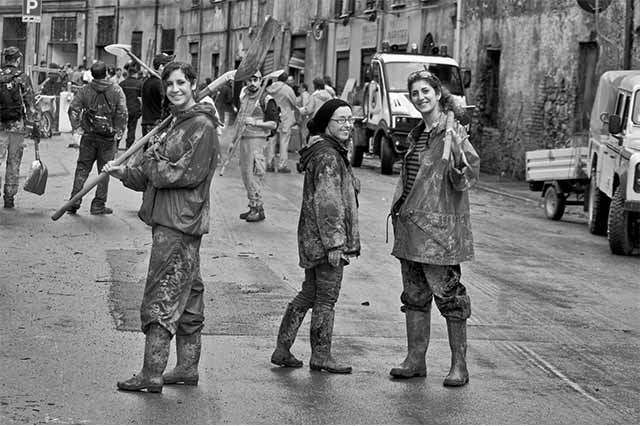





It’s wonderful to read about the history of the Italian comedies and the use of the beautiful masks.
Also enjoy the translations which helps me learn more of the Italian language.
Melissa, molto interessante e informativo. Sempre ben fatto.Io sono studente di l’italiano lingua. Mi piacciono moltissimo il blog, podcasts, youtube. Mi aiutano imparare con piacere. Grazie e
Brava!